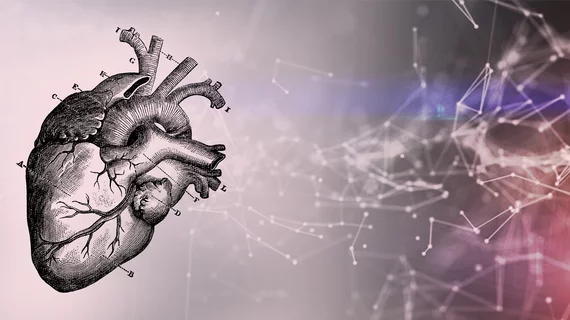New AI software a low-cost, efficient option for coronary artery calcium scoring
Using artificial intelligence-based software for coronary artery calcium scoring (CACS) is comparable to manual methods and can be universally applied across a range of vendors and CT scanners, according to research published Tuesday.
CAC scores play a vital role in diagnosing and treating coronary artery disease (CAD). Typically, they are completed via ECG-gated non-contrast-enhanced cardiac CT scans or non-gated chest CT. And while manual methods and radiologist expertise has shown to be as accurate as cardiac CT scans, the process is time consuming.
AI technology that can evaluate information from both chest CT and cardiac CT enables CAC scores to be completed more frequently and in less time.
In this study, the diagnostic performance of AI-driven CACS in a clinical setting was evaluated. The authors enrolled 901 patients who had undergone both chest CT and ECG-gated non-contrast-enhanced cardiac CT with the same equipment. AI-CACS software was based on a deep learning algorithm and trained on multi-vendor, multi-scanner and multi-hospital data from a chest CT database.
The results showed a 95% agreement between both methods, with a concordance rate of 80.6%. AI-developed risk categories were similar across three different types of machines. Overall, the AI-CACS and manual CACS showed good agreement in terms of risk category.
CAD is a leading cause of death worldwide, but the authors indicate that using AI-CACS could detect diseases before patients begin to develop symptoms.
“Determination of the AI-CACS by chest CT could serve as a low-cost and labor-effective strategy for identifying CAD risk categories,” Yu Zhang, with the Department of Radiology at the Second Affiliated Hospital of Chongqing Medical University in China, and co-authors wrote. “The AI-CACS software algorithm has good clinical universality,” they continued.
You can read the full study in the European Journal of Radiology.
Related Cardiac CT and Calcium Scoring Content:
VIDEO: Current guidelines for the use of CT calcium scoring in preventive cardiology
VIDEO: Use of CT to assess coronary plaques — Interview with Leslee Shaw, PhD
Cardiac CT soft plaque assessment my offer paradigm shift for coronary disease screening.
VIDEO: Top 6 takeaways from the Society of Cardiovascular CT 2022 meeting — interview with Eric Williamson, MD
New CAD-RADS 2.0 reporting for coronary CTA offers patient management recommendations
VIDEO: The new role of cardiac CT under the 2021 chest pain evaluation guidelines — Interview with Eric Williamson, MD
New AI software a low-cost, efficient option for coronary artery calcium scoring
FDA clears artificial intelligence tool for incidentally determining heart disease risk via CT
CAC scores help predict TAVR mortality
AI approach may lead to ‘on the fly’ risk scoring for heart attacks
New deep learning study brings automated CAC scoring ‘one step closer to clinical translation’
VIDEO: Office-based cardiac CT and FFR-CT offer a new business model

